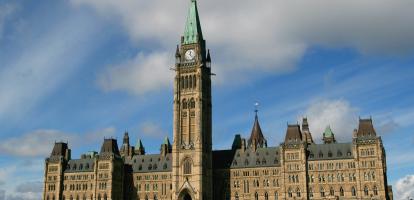Vaccines are giving everyone hope that the COVID-19 global pandemic may soon allow us to return to our normal lives. That hope has been tempered by frustrations about vaccine rollout and fear of mutating variants and so almost all parts of the country remain in some kind of lockdown. But what strategy should we follow on lockdowns to get us through to what we hope is full inoculation? What we need is a tool that considers both health and the economy, not the false dichotomy that we must choose one over the other.
Research we have conducted for a C.D. Howe Institute paper using an epidemiological-economic model provides important insights to help guide us until a vaccine is widely available. The results we present below show the benefits in dollar terms and health outcomes of a more-targeted approach to lockdowns. They hold even if new variants of the virus raise the transmission rate and delay full inoculation.
In the early days of the pandemic, with information limited, the focus was almost exclusively on health and on imposing a lockdown for all non-essential parts of the economy so as to minimize infection and mortality rates — and that was right. While this “health-only” policy did reduce infection rates and flatten the curve, it also resulted in the worst economic downturn since the Great Depression.
Success on the infection front was short-lived, however, as infection rates surged again in the early fall. While progress in the development of vaccines is very encouraging, their rollout is likely to take much of this year, if not longer. That means another six months at least of not letting our guard down and remaining vigilant in taking what interventions are necessary to contain the virus and minimize deaths.
With the knowledge gained over the past year, however, we can now better gauge risks and have more-informed discussions about the optimal mix of policies — on the health front, on the economic front, and, critically, in the intersection of the two. That such an intersection exists is often denied, of course. People are either pro-hospital or pro-business. But this is a false dichotomy. We need to be pro both. The question we should be asking – and it’s the question we ask as a society every day, even in non-COVID times — is what health outcomes do we find acceptable while minimizing economic loss (or maximizing economic gain, as it were).
Our model uses data collected during the nine months between March and December 2020 to explore what intervention strategies will minimize economic loss without worsening, and maybe even improving upon, the health outcomes we achieved before the second wave of infection.
Compared to a uniform lockdown for everyone, we find that a targeted approach by age or industry would allow policymakers to achieve the same or better health outcomes at a lower economic cost until vaccines are widely available. To be clear, a targeted approach does not necessarily mean a less severe lockdown when compared with a uniform approach, nor does it preclude states of emergency if need be. What it does mean is a willingness to treat different groups differently based on the risks they face — both to themselves and to others through spreading.
An age-based approach to lockdown can reduce the economic loss — without worsening health outcomes — from an estimated $116 billion to $77 billion, a significant saving in terms of incomes, profits and taxes of approximately $40 billion. The economic gain results from younger people being locked down less severely, while the elderly are protected even further. We get similar results when we focus on industries, where targeting higher-contact sectors produces better economic results — again: without sacrificing health outcomes.
In a number of provinces, outbreaks in long-term care (LTC) facilities have resurfaced during the second wave, requiring continued targeted attention. LTC facilities are underfunded and understaffed, leaving opportunities to improve protection of the elderly. As well, food processing and warehouse distribution centres remain high-risk industrial sites in key parts of the country — again providing scope for interventions to better protect employees, and, therefore, the rest of society. A sharper focus on these types of high-risk areas would allow flexibility in other parts of the economy — for example, increasing patronage in small businesses where appropriate protocols have been put in place.
Even more gains are available from improved testing and tracing and mask-wearing, which allow for less severe lockdowns, thus lowering economic costs without sacrificing lives. When targeting by age, these improvements reduce costs by another $27 billion (for testing and tracing) and $25 billion (for mask-wearing).
Needless to say, as with any model, our results are indicative, not exact. Still, they make clear the gains to be had from a more surgical approach to interventions. One caveat: Timely, accurate data, and clear communication are crucial to effective COVID policy-making and they have often been in short supply.
Modelling exercises such as ours are but one tool in determining the appropriate policy response to COVID-19. However, the model’s ability to consider both health outcomes and the economy makes it of value to both health and economic policymakers as vaccines roll out.
Published in the Financial Post
Paul Jenkins is former senior deputy governor of the Bank of Canada and a senior fellow of the C.D. Howe Institute, where Jeremy Kronick is associate director, research.




